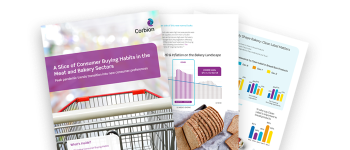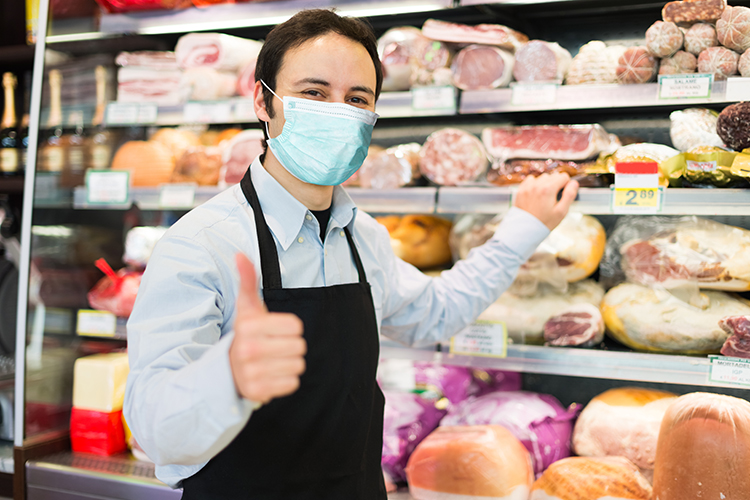How Practicality and Creativity are Hallmarks of the 2020 Marketplace
If the global pandemic has affected practically everything, it also seems to have affected everything practically. There is a new pragmatism in the marketplace, driven by consumer concerns and supply chain realities.
On the business end, the temporary closing/limitations of restaurants, increased e-commerce and at-home meal preparation caused unusual supply and demand situations that had to be remedied in a sensible yet creative way, whether it was processors switching gears from foodservice to retail or purveyors pivoting to sell and deliver directly to consumers.
Meat and poultry processors have gotten inventive – quickly – to protect their employees and the products they supply to feed the nation and world. Those who could stay open ramped up production to meet surging demand, and took steps to prevent the spread of the virus among staff, from the use of dividers on the line to the frequent sanitation of those dividers and other contact surfaces. Some poultry plants began producing more whole birds over other processed cuts to keep ahead of the most immediate needs for protein. Other red meat companies redirected operations to produce items with a longer shelf life in the wake of shifting eating habits.
“Most importantly, the pandemic has forced many consumers to rethink how they shop for and cook food and, ultimately, what they eat. As some form of physical distancing, soaring unemployment, and an economic recession continue to shape global markets, protein and produce companies will face challenges and opportunities in key areas – health, safety, sustainability, value and trust.”
Dasha Shor, global food analyst, Mintel, May 28, 2020, ‘Protein and Produce in a Post-COVID-19 World’
| 85% of consumers in the U.S. have made at least some changes in the food they eat or how they prepare it because of the COVID-19 pandemic. (Source: 2020 Food and Health Survey, International Food Information Council) |
Conscientious Consumers
On that note, the new practicality and innovation stemming from recent upheavals is evident in many consumer attitudes and behaviors. Some issues are more top of mind among consumers than they were just a few months ago:
Shelf life: While people are generally eating out less and cutting down on grocery trips, they are cooking more at home. As a result, they are looking to get more out of what they buy, seeking meat and poultry products with a longer shelf life that can be stored in their refrigerator until ready to use or frozen without sacrificing quality and safety.
Food waste: Consumers closely monitoring their food supply at home are also more mindful about not having to throw food away. Already a concern from a sustainability standpoint before the pandemic, the health crisis and economic fallout have spurred a renewed interest in reducing food waste as much possible.
Value focus: Worried about their jobs and/or the overall economic health of the country and world, people are stretching their dollars. Private label and economy brands are likely to come out of 2020 stronger. And with more families living and working under one roof, larger package sizes are in greater demand.
Taste and convenience, top drivers in the best of times, are essential in the evolving marketplace, too. Consumers who are buying more and different products while testing out their cooking skills at home expect a certain level of quality and ease of use, and won’t buy products again that don’t meet their standards.
“Spikes in grocery sales for items with a long shelf life wasn’t just a preference among U.S. consumers when coronavirus hit, it was a survival tactic.”
ABC News, June 16, 2020, ‘How Food Producers are Preparing for the Second Wave of COVID-19.’
| During the pandemic shutdowns, meat sales surged as consumers bought more during their shopping trips. Cuts with the highest growth across all outlets include whole bird turkey, ground beef, chicken wings, cubed beef and pork ribs. ) (Source; IRI, “Meat During COVID-19” webinar |
Safe and Sound
As a provider of meat preservation and food safety solutions, Corbion has also acted quickly to respond to the immediate needs of processors and consumers. Managing the ingredient supply amid shifting circumstances was a priority for much of this spring, and planning for different possibilities next fall and winter is well underway this summer.
Beyond managing short-term ingredient supplies, Corbion is working closely with meat and poultry processors to provide ingredient solutions for products that fit into consumers’ changed lifestyles, including interest in items with a longer shelf life, better value and great taste:
- PURASAL® is a family of sodium and potassium lactate that can extend shelf life by up to 100% by reducing the growth of spoilage bacteria, including lactic acid bacteria.
- Opti.Form® Ace are antimicrobial ingredients that provide cost-effective shelf life extension for proteins that cost less and last longer, in addition to controlling Listeria.
Corbion’s broad portfolio includes a range of preservation and safety solutions for shelf life extension, enhanced food safety, convenience and quality.
What is quality?When it comes to meat and poultry, quality isn’t just about taste. A satisfying eating experience depends on several attributes:
45% of U.S. and UK consumers are influenced by texture when having food and drinks, and 68% say that texture makes for a more interesting food experience. (Source: Innova Market Insights, “Top 10 Trends for 2020”)Be Nimble, Be Quick If nothing else, 2020 is a reminder that it’s almost impossible to predict the future. There is no truly parallel precedent in history for what’s going on right now, so the ability to be creative and act fast is crucial. That doesn’t mean that you can’t plan for uncertainty, however. Some processors are building safety stocks of items in case there are more marketplace disruptions in the fall and winter. Many are also focusing on producing and promoting items that deliver on longer shelf life, ease of use and value pricing. |


